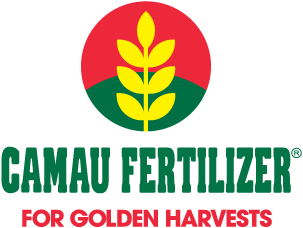RISK
MANAGEMENT
PVCFC has applied “The three lines of defense” to support BOD and the General Director to be responsible for supervision and operation of risk management by identifying factors that can affect missions, vision and strategic goals of the Company, working out solutions to minimize threats and grasping opportunities.

The three lines of defense include
First line
affiliated units under Executive Board, risk owners
Second line
Legality & Compliance Division, inspecting, supervising and consulting first line
Third line
Internal Audit Division - Audit and Risk Management Committee under BOD, implementing internal audit of the first and second lines.

Photo: Model of “The three lines of defense” of PVCFC
REVIEW, ASSESSMENT OF RISKS IN 2023
Since implementation of risk management, PVCFC has issued Risk Appetite Statement, Risk Acceptance Criterion and Risk Measures; building risk management regulations and implementation procedures, issuing company and unit-level risk documents.
Following operational practices over the past years, PVCFC has reviewed, updated risk management frameworks aligned with the company’s strategic goals in each period. In 2023, facing multiple challenges in Vietnam and around the world in fertilizer business and production, PVCFC, responding to requirements of new status, reviewed, evaluated, updated current risk management related documents and regulations.
In the past year, BOD has issued the updated risk management regulations, updating Risk Management Statement, Risk Acceptance Criterion and Risk Measures. Then, the General Director has reissued the risk management process. Executive Board has reviewed, evaluated, identified and issued company-level risk documents and unit-level risk documents to identify the root causes of risks, outlining solutions and actions in details, assigning wholesale units and coordinating units the jobs of ensuring efficiency of risk management goals.
By classifying risks in 4 main groups at risk management regulations, PVCFC has identified company-level material risks as follows:

STRATEGIC RISK
- Risk of price fluctuations in proprietary trading (Potash, DAP, etc.) can affect the approved profit plan: Possibility of price fluctuations can lead to reduction of efficiency of proprietary trading (Potash, DAP, etc.), decrease in profit as approved by the Company.
- Risk of competition with other manufactures in the region: product competition with other competitors in the region can cause negative impacts on revenue plan and output approved by the Company.
OPERATIONAL RISKS
- Risk of machine downtime or stoppage and load shedding caused by gas supply rig malfunction can lead to output loss: the possibility of machine stoppage due to interruption of gas supply (recovery time can reach >24h or gas shortage) leading to output loss.
- Risk of production equipment and machinery failures can cause output loss: Possibility of production equipment and machinery failures is very difficult for replacing or taking a long time to prepare and causing output loss.
- Network and information security risks
- There is a potential risk that Ca Mau branded products (organic, NPK) fail to meet requirements of physical/chemical properties according to announced standards: there is a potential risk that Ca Mau branded products (organic, NPK) fail to meet requirements of physical/chemical properties according to announced standards; causing impact on reputation and incurred costs related to product recall and claiming compensation.
COMPLIANCE RISK
- Risks of violating regulations on safety, health and environment: the likelihood that the Company violates regulations on environment, health, safety, security and requirements of license or fails to ensure environmental responsibilities. Then, it can lead to serious personal injuries, loss of life, disruption in business and production activities, and big financial losses.
FINANCIAL RISKS
- PVCFC is implementing financial management tools but fails to identify company level risks related to finance.
The above risks are classified on risk likelihood and level of impact on company level risk heat map:

THE COMPANY LEVEL RISK HEAT MAP
ESG RISK MANAGEMENT
Based on the inevitable need forsustainable development trend for all companies, PVCFC always pays a special attention to risk management based on 3 elements: environment, society and governance. PVCFC is aware that ESG practices bring more opportunities, financial benefits such as expansion of opportunities in investment capital attraction or long-term economic values including assurance of sustainable business, assurance of prestige and improvement of corporate brand.
Based on early-built risk management system, PVCFC always review, evaluates material risk in a yearly basis. Regarding ESG practices, PVCFC classifies list of risks under 3 factors of E-S-G. This supports the process of management and control of potential risks in accordance with orientation on environment, society and governance.
Regarding environment, PVCFC always ensures operational safety in compliance with the State’s regulations on gas emissions, waste, QHSE standards and related standards. Therefore, the Company always strictly control risks of safety violations, health and environment, preventing any possible incident and setting violation threshold.
Given big benefits of ESG system, PVCFC is always ready for completing and improving corporate governance activities in general and risk management in particular. With a desire of becoming one of the pioneers in ESG practices of the Group in particular and of Vietnam in general as well as increasingly enhancing its position in the region toward sustainable development and prosperity.




